Belgian Food Dishes: Basic Overview
Common Ingredients
Common Cooking Methods
Courses
Meals
Key Taste
Eating Etiquette
Meal Presentation
Culinary Festivals
Influence and Fusion
Popular Types of Belgian Dishes
-
Stews
Belgian stews are often slow-cooked dishes. Therefore, they are flavorful dishes since the ingredients’ flavors meld together.
Common ingredients across various stews include meats (beef, chicken, or fish), vegetables, and varied bases, from beer to cream or a lighter broth.
-
Cakes and Pastries
Belgium’s cakes and pastries are associated with café culture and fine baking and chocolate making.
Bakeries and patisseries take pride in their artisanal methods, often using recipes that have been in families for generations.
-
Fried Dishes
Fried dishes, most notably pommes frites (Belgian fries), are the most famous Belgian dish.
Fried dishes can also be snacks or appetizers.
Belgian dishes are a blend of flavors and traditions, reflecting influences from French specialties along with fares from Germany and dishes from the Netherlands. Known globally for its chocolate, waffles, fries, and beer, Belgian food emphasizes quality and regional ingredients.
Key staples include potatoes, leeks, gray shrimp, white asparagus, Belgian endive, and local beer. Belgians enjoy a variety of meals throughout the day, including a light breakfast, a medium lunch, a snack, and a large dinner.
The country’s cuisine’s emphasis on seasonal and local ingredients, combined with a penchant for deep-frying and a rich assortment of sauces.
To fully savor the Belgian food experience, you should learn about some pairing options for drinks and food in Belgium after learning about the dishes.
26 Popular Belgian Dishes with Filters
Explore the specialties that are available in Belgium to find out excellent options for your meal. Make full use of the filter system to check out these dishes by ingredients, tastes, dish types, alphabetical order, cooking methods, and global popularity.
Then, check out the categories of Belgium dishes revolving around the most popular, traditional, national, and exotic picks.
Vol-au-Vent
- Traditional
Vol-au-vent, translating to “windblown,” is a puff pastry in Belgium encasing a rich filling of chicken and cream.
Often served as a charming appetizer in Belgian and Luxembourg cuisine, it can also be transformed into a hearty main course when presented in generous portions with fries, mashed potatoes, or vegetables.
Once the outer puff pastry is cooked, people tend to cut off the top like a lid to fill the dish with a creamy filling.
Filet Américain
- Traditional
Filet Américain is a steak tartare variant popular in Belgium and Luxembourg, notably influenced by American cuisine. Created in 1926, it consists of minced raw beef and onions with an egg yolk on top.
The raw meat is often seasoned with mustard mayonnaise and other fragrant ingredients. Additionally, filet Américain is usually eaten on bread, fries, or toast.
Pommes Frites
- National
- Traditional
Pommes frites, often mistakenly called “French fries” outside of Belgium, are fried slices of potatoes for serving as an appetizer with dipping sauces.
In Belgium, their superiority is attributed to a unique double-frying technique, with the first fry for softening, while the second is a refry just before serving, ensuring their iconic crispiness.
Belgian fries are a staple, often accompanying major local dishes. Unlike the typical pairing with ketchup, in Belgium, they’re commonly enjoyed with a variety of sauces like garlicky mayo, samurai, or the traditional sauce andalouse.
Cramique
- Traditional
Cramique is a traditional brioche bread of Belgium, enriched with raisins and enjoyed across the country, northern France, and Luxembourg. The name “cramique” originates from the 14th-century term “cramiche,” meaning cream loaf.
Typically consumed for breakfast or as a snack, cramique is savored with butter, jam, or cocoa, and can also be served with foie gras (goose liver). The bread’s soft, moist texture is a result of the dough and the sweetness of raisins.
Bloedworst
- Traditional
Bloedworst, or boudin noir, is the Belgian take on blood sausage. This savory sausage brings together the blood (from cow or pig) with animal fat, shoulder meat, herbs, and sometimes bread crumbs, creating a meaty flavor.
Bloedworst can be prepared in various ways, including grilling, sauteing, and barbecuing, and some even enjoy it raw. It’s traditionally served with applesauce and mashed potatoes in Belgium.
Usually, these sausages come in a diameter of around 4 inches with a signature dark red or black color.
Boudin Blanc
- Traditional
Boudin blanc is a milder, yet flavorful Belgian white sausage, especially popular in Liège. Unlike regular sausages, it boasts a richer flavor profile, pairing wonderfully with mashed potatoes or bread.
Crafted from minced veal, pork back, or shoulder, along with cream and milk, its unique milky color is achieved through brief boiling. For authentic white sausage, the port city of Antwerp is the place to visit.
Tomates Aux Crevettes
- Traditional
Tomates aux crevettes is a classic Belgian dish stuffed with tomatoes with gray shrimp.
Ideally, the dish features ripe tomatoes hollowed out and filled with peeled shrimp, accompanied by a dressing of mayonnaise, tomato juice, lemon juice, and herbs.
The white shrimp, with hints of pink, contrasts strikingly with the tomatoes and the green of the salad. With its juicy, tangy flavors, tomates aux crevettes serve as a delightful Belgian appetizer with raw vegetables and fries.
Croquettes Aux Crevettes
- Traditional
Croquettes aux crevettes is a Belgian shrimp croquette utilizing the gray shrimps known as crevettes grises. The sweet, flavorful shrimp flesh makes these croquettes a national favorite.
The croquette copes with a crispy profile often paired with the tangy taste of the shrimp.
Waterzooi
- Traditional
Waterzooi is a soup or stew made from a variety of meat and vegetables. Its name is derived from an old Flemish word, “zooien,” which means “to boil”.
For hundreds of years, waterzooi has been a national comfort food for Belgians, combining fish, butter, pork, eggs, and a wide range of ingredients.
However, chicken waterzooi with leeks, carrots, egg yolks, cream, and cornstarch is by far the most popular variation. It is warm, spicy, and particularly suitable to enjoy in winter.
Stoemp
- Traditional
Stoemp is a Belgian take on mashed potatoes, having a blend of potatoes and vegetables, enriched with plenty of cream and milk. The specialty is distinguishable for its smooth texture and rich flavor.
This potato dish can be served with various accompaniments like bacon, fried eggs, sausage, or even horse meat. Traditionally, stoemp mashed potato goes best with fried boudin and egg.
Boulets À La Liégeoise
- Traditional
Boulets à la liégeoise is a Belgian meatball featuring a unique sweet-sour sauce from Liège, Wallonia. The meatballs have a mix of pork and veal or beef, combined with bread crumbs, onions, and parsley, then fried to a golden brown.
The distinctive sauce, named after Madame Géraldine Lapin, includes onions, vinegar, brown sugar, Liège syrup, and raisins. Commonly served with fries, mayonnaise, and either crudités or apple sauce, this dish enjoys widespread popularity in Liège and throughout Belgium.
Carbonnades Flamandes
- Traditional
Carbonnades flamandes, known as carbonnade à la flamande in French or Stoverij in Flemish, is a Belgian stew made using beer instead of wine.
This rich, hearty dish utilizes the unique flavors of over 600 Belgian beers, particularly oud bruin (Old Brown) or Flanders red ale, to slow-cook beef until it’s exceptionally tender.
Seasoned with herbs and accompanied by onions, mustard, and garlic, beer remains the highlight of the dish. In Ghent, carbonnade flamande may also include liver and kidney. Traditionally, it’s served with Belgian fries, boiled potatoes, or stoemp.
Chicons Au Gratin
- Traditional
Chicons au gratin is a Belgian specialty that features Belgian endive, also known as chicory, at its core.
This vegetable, known for its sweet and nutty flavor when cooked, is wrapped in sweet ham and covered with a gratin made from Mornay sauce and grated cheese.
The dish is particularly comforting, making it a perfect dinner option after a long day and ideal for warming up during the cold winter months. Belgians typically enjoy Chicons au gratin with mashed potatoes and additional Mornay sauce.
Mitraillette
- Street Food
Mitraillette is a sandwich in Belgium with its name translating to “submachine gun” in French, likely referencing its shape or wartime origins.
Often likened to a hamburger, this hearty meal consists of a long baguette filled with Belgian fries, fried meat or meatballs, and various sauces. Fresh vegetables are frequently added for a healthier twist.
Lacquements
- Traditional
Lacquements are a sweet pancake treat originating from Liège, yet first created by Désiré Smidts at the Antwerp Fair. These treats consist of thin wafers filled and coated with a sugary syrup flavored with orange blossom.
The process involves preparing a dough, baking it in a waffle iron, then slicing and drenching it in the syrup. Lacquements can be purchased individually in a cone or in boxes of six and are suitable for reheating in the microwave.
Paling In ‘t Groen
- Traditional
Paling in ‘t groen is a freshwater eel culinary creation of Belgium simmered in a sauce rich with a variety of green herbs, including sage, oregano, basil, chervil, and parsley.
The key is to add these herbs at the last moment to preserve their vibrant flavor and color. Originally a modest Flemish specialty, the scarcity of freshwater eels has transformed paling in ‘t groen into a sought-after delicacy.
Frikandel
- Street Food
Frikandel is a skinless sausage in Belgium consisting of a blend of pork, chicken, and sometimes horse meat, seasoned with spices and formed into a skinless, cylindrical shape.
Often, the frikandel is boiled and then deep-fried for a crispy outside and unique taste. People enjoy frikandel with fries and mayonnaise in Belgium.
Moules Frites
- National
Moules frites is a Flemish dish in Belgium of mussels and fries dating back to the 18th century. Surprisingly, the average Belgian consumes 3 kilograms (6.6 lbs) of the dish annually.
Belgian mussels, known for their succulence compared to those from neighboring regions, are prepared in various styles and served with double-fried fries and dipping sauces.
For serving, each customer is presented with a pot of moules frites with an average serving of around 1 kilogram (2.2 lbs) for one person.
Konijn Met Pruimen
- Traditional
Konijn met pruimen, or rabbit with prunes, is a cherished stew from the Flemish cuisine of Belgium, with roots in the early 20th century. This dish combines rabbit meat with prunes, infusing it with a delightful sweetness.
The addition of herbs, white vinegar, and extra virgin olive oil elevates the stew, making it exceptionally flavorful. Croquettes are commonly served alongside konijn met pruimen, complementing its rich taste.
Gaufre
- National
Gaufre is the Belgian term for waffle, a staple dessert in the country. In Belgium, there are two distinct types, featuring the Liège waffle, which is round and sweetened with crystalized sugar.
Another version is the Brussels waffle, known for its rectangular shape and sweetness coming from toppings such as fruit, chocolate, or cream, rather than from sugar within the batter.
Belgian Chocolate
- National
Belgian chocolate is the national pride of Belgium, boasting up to 2000 varieties of chocolate.
Chocolate is a staple in numerous Belgian foods, drinks, and desserts, and it’s common to be offered a complimentary piece with coffee or tea. Usually, Belgian chocolate has a higher cacao content with a darker and more bitter profile.
Rijsttaart
- Traditional
Rijsttaart is a Belgian dessert tart with rice as its primary ingredient. Known as “tarte aux riz” in French, these rice tarts feature a crust made from rice flour and a creamy custard filling of milk, cream, and eggs.
Available in various sizes, rijsttaart is traditionally served cold. Believed to have originated in the 17th century in the town of Vervier near Liege, the introduction of rice led locals to create these delightful tarts.
Speculaas
- National
Speculaas are traditional spiced cookies originating from Belgium and the Netherlands, enjoyed also in Germany, Luxembourg, northern France, former Yugoslav countries, and Indonesia.
These thin, flat cookies are distinguished by traditional images stamped or molded onto their surface. While closely associated with the feast of St. Nicholas, speculaas are enjoyed year-round, often accompanied by coffee, tea, or ice cream.
In regions outside their European origins, such as Indonesia and the former Yugoslav countries, they are known by different names and reserved for special occasions.
Sirop de Liège
- Traditional
Sirop de Liège is a sweet syrup delight from the Liège region. Despite its name, it resembles jam more than syrup.
This delicacy is crafted by slowly cooking and then mushing apple or pear cores, with a second round of cooking without adding any sugar. A typical Belgian breakfast might include a few slices of bread with sirop de Liège and cheese.
Plus, this syrup is a key ingredient in various local dishes, including Liège meatballs and waffles.
Aioli
- Exotic
Aioli is a cold sauce from Belgium, primarily made of garlic and olive oil. It varies by region, with some versions incorporating egg yolks, lemon juice, mustard, or herbs.
As an emulsion, aioli combines oil with water-soluble compounds, though purists insist on only garlic and salt for authenticity. Originally crafted with a mortar and pestle, modern aioli can also be made using a food processor or blender.
This versatile sauce accompanies a wide range of dishes, including seafood, fish soup, boiled vegetables, poached fish, snails, and rice dishes, enriching the flavors of Occitan, Provençal, Catalan, and Valencian cuisines.
Cuberdon
- Traditional
Cuberdon is a traditional Belgian candy, originating from Ghent, known for its unique cone shape. This candy features a hard crust with a soft, sweet raspberry filling, available in various colors and flavors.
Each cuberdon measures about 2.5 cm in width and weighs between 10 to 18 grams, though smaller versions are also made. Despite its popularity, cuberdon has a short shelf life of three weeks, limiting its export outside Belgium.
What Are Meal Structures in Belgium?
The meal structure in Belgium is similar to that in many Western European countries, characterized by three main meals throughout the day.
The typical Belgian breakfast is relatively light and may include bread, pastries, butter, jam, honey, and sometimes cheese or cold cuts.
Lunch is often an important meal, especially for those working or in school. These are typically sandwiches or a hot dish. The hot meal for lunch is pretty similar in size to dinner, including meat or fish, vegetables, and potatoes or rice.
Dinner is the main meal of the day and is typically served around 6 or 7 PM. It usually contains a main course made with meat or fish, a side of vegetables, and potatoes, rice, or pasta.
Besides these main meals, Belgians, like their neighbors, enjoy snacks and small bites throughout the day. Coffee breaks, often accompanied by a sweet treat, are common in the morning or afternoon.
What Belgian Dishes to Have with Beverages?
To take Belgian specialties to a new level, refreshments are needed to enhance their flavors. Here are some common pairings to consider:
If somebody tells you that Belgian cuisine only has waffles and chocolate to show, prove them wrong by cooking the delicious dishes I’ve shown you! Tell me how that goes by leaving a comment. And feel free to share this post with your friends and loved ones. Bon appetit!



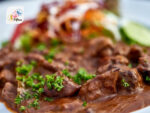
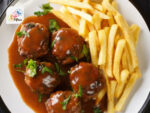
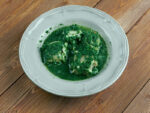
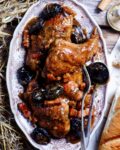


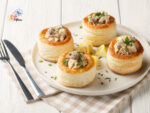


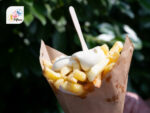
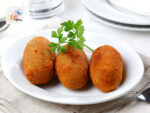

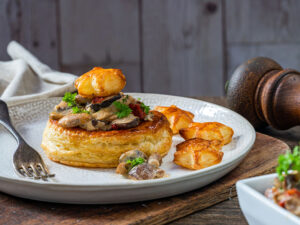
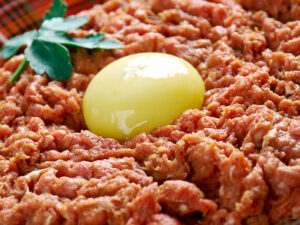

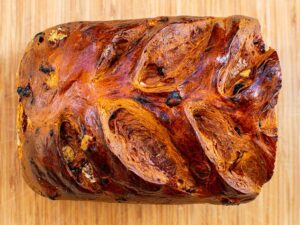
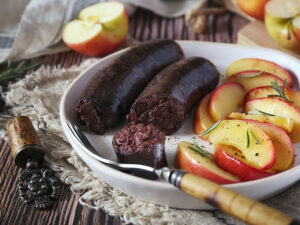
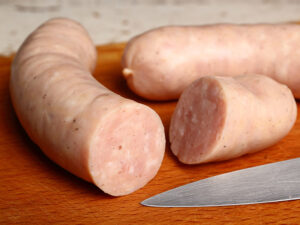
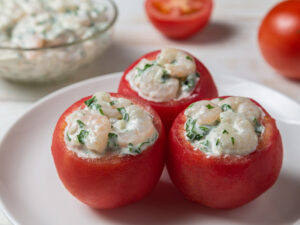
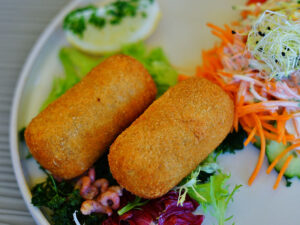
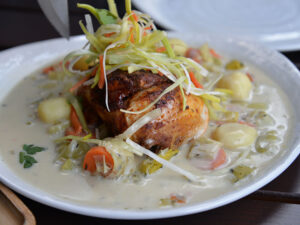
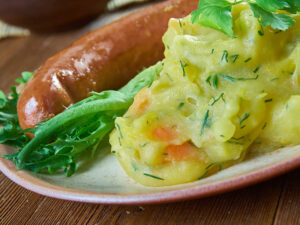
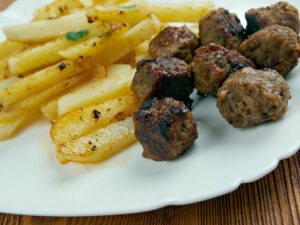
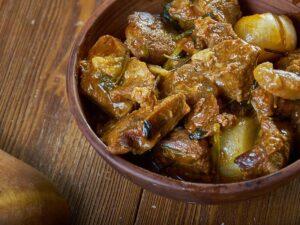
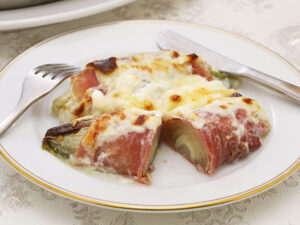
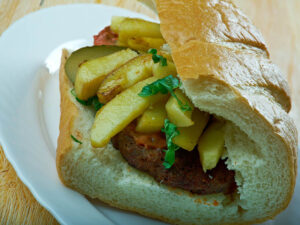
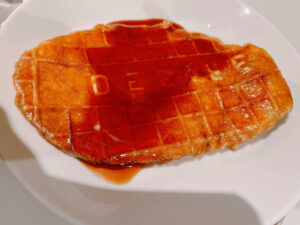
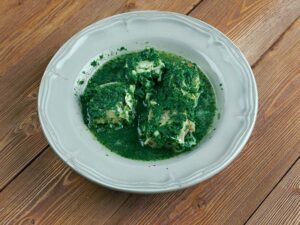

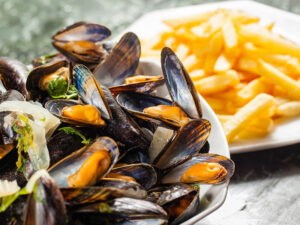
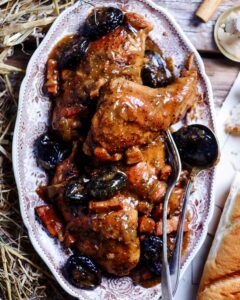
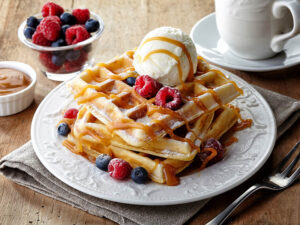

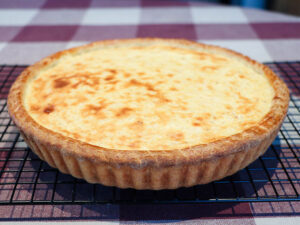
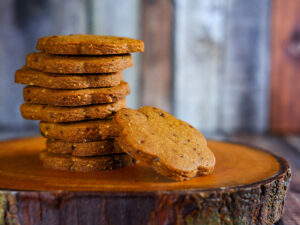
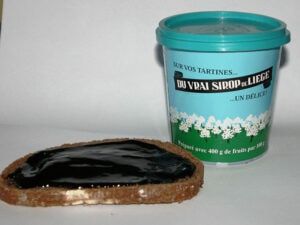
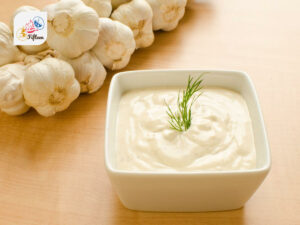

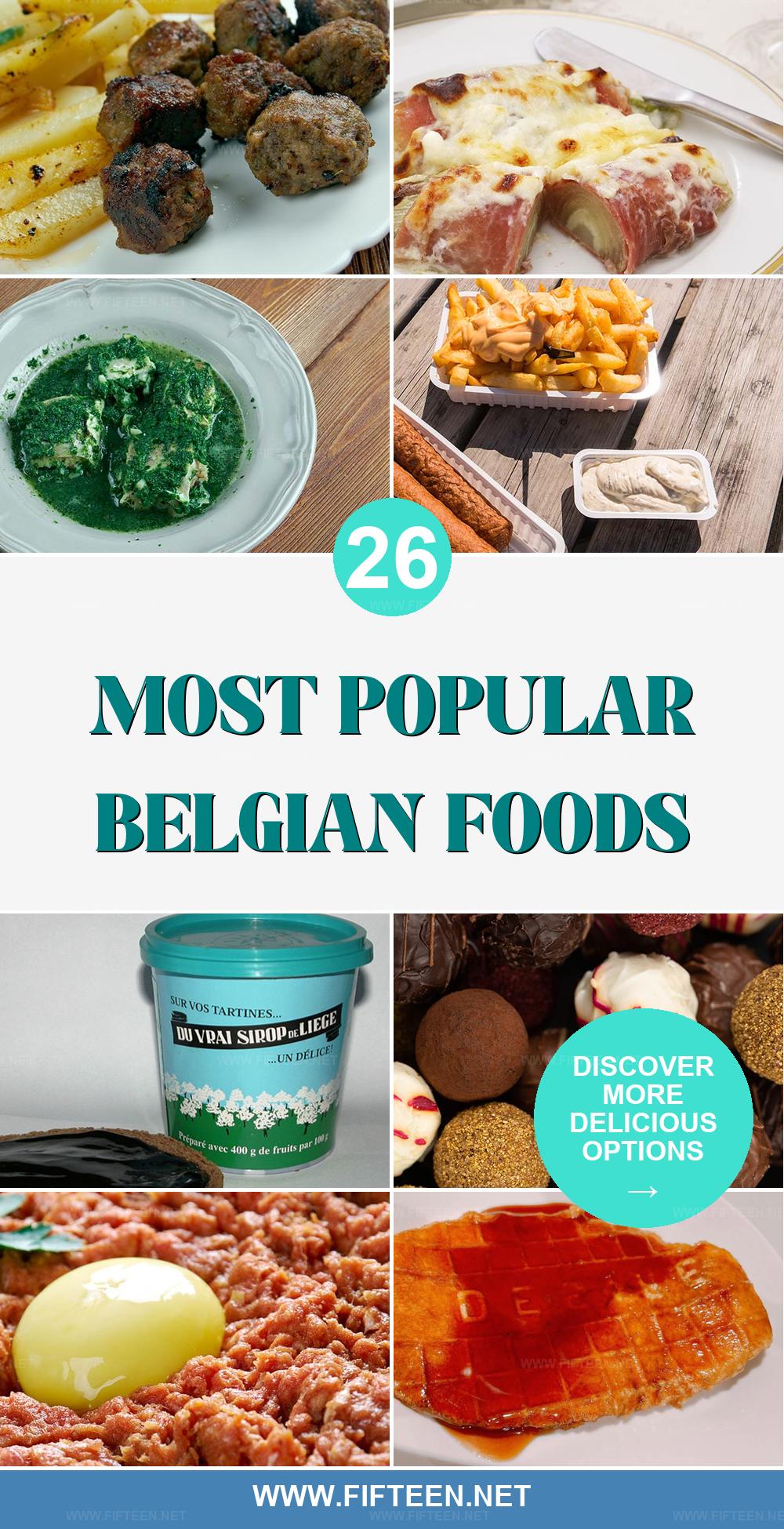
Jamie Scott
Editor in Chief, Senior Content Writer
Expertise
Home Cooking, Meal Planning, Recipe Development, Baking and Pastry, Food Editor, Cooking-video Maker, Western Food Evaluation Expert
Education
Le Cordon Bleu College of Culinary Arts
Local Community College, New York, NY
Jamie Scott is a skilled culinary expert and content creator specializing in Western cuisine. With over 15 years in the culinary field and formal training from Le Cordon Bleu, Paris, Jamie deeply understands how to blend nutrition with delicious flavors. His passion for cooking matches his commitment to making healthy eating accessible and enjoyable.
On Fifteen.net, Jamie brings a fresh perspective to classic dishes and beverages, offering readers insightful recipes, cooking tips, and a fresh view on meal planning that emphasizes taste, health, and simplicity.